From The New Answers Book 1 Chapter 25:
by Clifford Wilson on January 24, 2008:
Original text found at answersingenesis.org here:
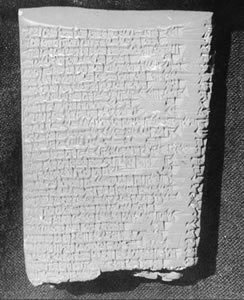
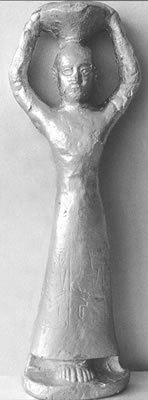
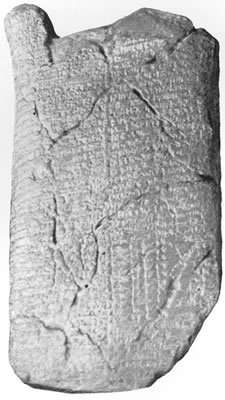
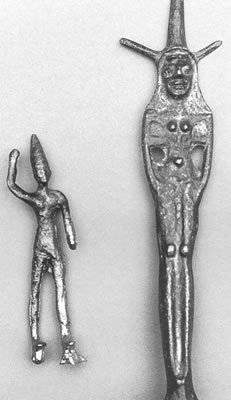
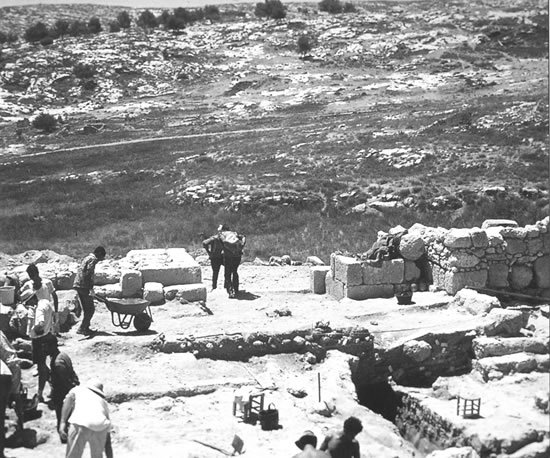
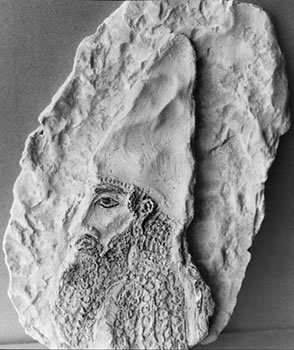
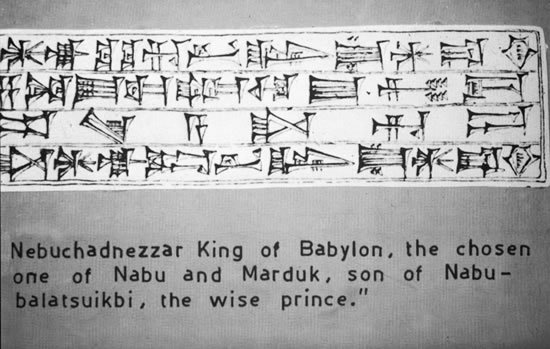
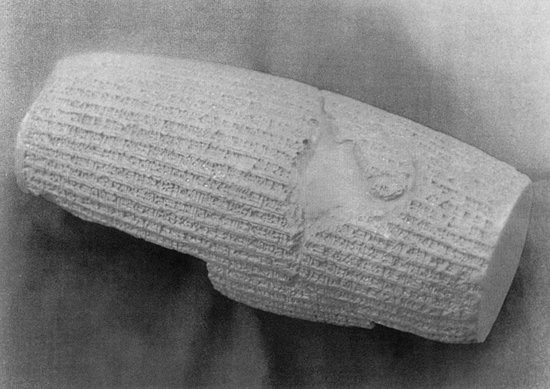
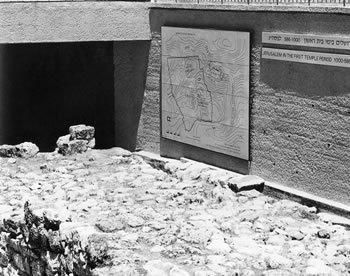
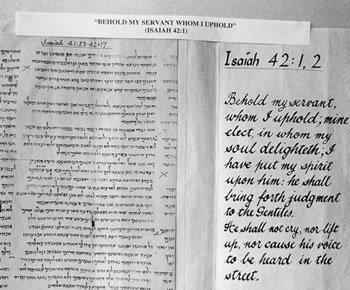
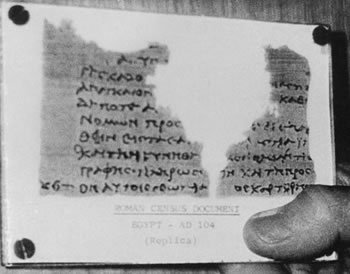
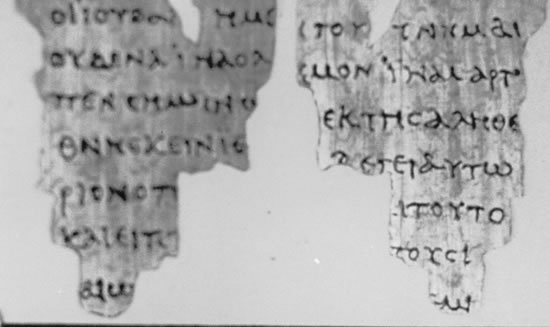
by Clifford Wilson on January 24, 2008:
Original text found at answersingenesis.org here:
In every area, the evidence has been forthcoming: God has vindicated His Word, and His Book is a genuine writing, with prophecies and revelation that must be taken seriously.
Follow the biblical record from Genesis to Revelation! This informative and beautiful book reveals discoveries that either confirm or illustrate the biblical narrative with over 200 full color images.
It is a biblical principle that matters of testimony should be established by the mouths of two or three witnesses. According to Hebrew law, no person could be found guilty of an offense without properly attested evidence from witnesses, even though this law was put aside at the trial of Jesus.
When it comes to the Word of God, a similar principle is demonstrated from the modern science of archaeology. We are told in Psalm 85:11, “Truth shall spring out of the earth,” and in Psalm 119:89, “Forever, O Lord, Your word is settled in heaven.” God’s Word is sure. It outlasts human generations, and in His own time God vindicates its truth. This puts God’s Word in a unique category: it is the “other side” of the two-way communication pattern between God and man. Man’s speech distinguishes him uniquely from all the animals, and God’s written Word distinguishes His special communication to man as immeasurably superior to all other supposed revelations.
According to that biblical principle of “two or three witnesses,” we shall now select evidences that support the truth and accuracy of God’s Word. In every area, the evidence has been forthcoming: God has vindicated His Word, and His Book is a genuine writing, with prophecies and revelation that must be taken seriously. His Book is unique because it is His Book.
Those inspired men of old wrote down God’s message, applicable to themselves in their own times, and also applicable to men and women across the centuries, right down to the present century. The Bible is the “other side” of the Christian’s study of the miracle of language. It is God’s chosen way of revealing His thoughts—the deep things which are unsearchable except by the revelation of the Holy Spirit.
In the following outline we suggest certain divisions of the Word of God. Then we list three significant evidences from archaeology to confirm that the witness is sufficient to cause the case to be accepted for each section—God’s Word is indeed Truth.
Major Evidences Regarding Genesis 1–11

One of the Babylonian Creation Tablets, Enuma Elish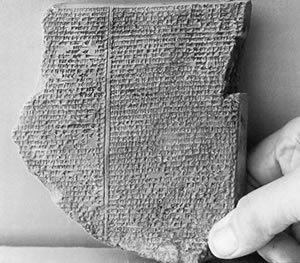

Part of the Gilgamesh Epic
Genesis 1–11 is the “seed-plot of the Bible,” an introduction to Abraham and great doctrines, such as God the Creator, Friend, Revealer, Judge, Redeemer, Restorer, and Sustainer. It is actual history, and it is a summary of beginnings.
Enuma Elish—This is the Babylonian Creation Record. We also have the Ebla Creation Tablet. The Bible record is clearly superior to this as the Enuma Elish has creation from pre-existing matter, which really isn’t creation at all. The Bible is the true account of this historical event.
The Epic of Gilgamesh includes the Babylonian Flood Story. Again, the biblical record is greatly superior. As Nozomi Osanai wrote in her master’s thesis on a comparison between Noah’s Flood and the Gilgamish Epic, “According to the specifics, scientific reliability, internal consistency, the correspondence to the secular records, and the existence of common elements among the flood traditions around the world, the Genesis account seems to be more acceptable as an accurate historical record.”1
Long-living Kings at Kish (Sumer)—These kings supposedly lived from 10,000 to 64,000 years ago. The Bible’s record is conservative and is the true account, while the Babylonian and other traditions have been embellished over time. It was later realized that the Babylonians had two bases for arithmetic calculations, based on either tens or sixties. When the records were retranslated using the system of tens rather than sixties, they came to a total within 200 years of the biblical record.
Major Evidences Regarding Genesis 11–36
This section contains Patriarchal records, with special reference to Abraham, the father of the Hebrews.
Abraham’s home city of Ur was excavated by Sir Leonard Woolley, with surprising evidence of near-luxury.2
The customs of Patriarchal times, as described in the Bible, are endorsed by archaeological finds at such places as Ur, Mari, Boghazkoi, and Nineveh. These were written records from that day—not just put down in writing many centuries later. They bear the marks of eyewitness reporting.

Ur Nammu, the king of Ur who claimed to build a famous tower
Thus, Abraham’s relationship with Hagar is seen in a different light by understanding that the woman who could not personally bear a child for her husband should provide him with one of her maidservants. In the Bible record we are told that it was Sarah who made the approach to Abraham, and her maid Hagar was a willing accomplice in having Abraham’s child. Thus, she gained economic security and personal prestige. We stress it was not Abraham who made the first approach to Hagar, but Abraham’s wife Sarah did in keeping with the customs of the day.
The records of the five kings who fought against four kings (Genesis 14) are interesting, in that the names of the people concerned fit the known words and names of the times.
Abraham’s negotiations with the Hittites (Genesis 23) are accurate and follow the known forms of such Hittite transactions. Neo-Hittites came later, but there were distinct language relationships. The Bible was right in calling the earlier people “sons of Hatti” or “Hittites.”
Interestingly, the Hittite word for retainers, which means “servants trained in a man’s own household” is hanakim (Genesis 14:14). This term is used only here in the Bible. Execration texts of the Egyptians (found on fragments of ceramic pots, which seem to have been used in ritual magic cursing of surrounding peoples) gives us the meaning of this term, and it is correctly used in the Bible record in Genesis 14.
Major Evidences Regarding Genesis 37–50
This section tells us the history of Joseph, the son of Jacob and great-grandson of Abraham. His brothers sell him to the Ishmaelites who sell him to an Egyptian eunuch. Joseph becomes successful in Egypt and helps to settle all of Israel there.
Known Egyptian titles such as “captain of the guard” (Genesis 39:1), “overseer” (Genesis 39:4), “chief of the butlers” and “chief of the bakers” (Genesis 40:2), “father to the Pharaoh” (actually “father to the gods,” which to Joseph was blasphemous because he could not accept Pharaoh as a manifestation of Ra the sun god; Joseph Hebraized the title, so that he did not dishonor the Lord), “Lord of Pharaoh’s House” (the palace), and “Ruler of all Egypt” (Genesis 45:8) attest to the historicity of this account.
Joseph’s installation as vizier (chief minister) is very similar to other recorded ceremonies. His new name was Zaphnath-Paaneah, meaning “head of the sacred college” (Genesis 41:41–45). Other Egyptian phrases and other local color are also plentiful throughout the record (e.g., embalming and burial practices [Genesis 50]).
The Dead Sea Scrolls make the number of the people of Jacob 75, not 70, in Genesis 46:27, thus correcting a scribal error and showing that Stephen’s figure was right (Acts 7:14).3
Major Evidences Regarding Exodus to Deuteronomy

The Eshnunna Law Code dating to c.1900 BC
These are the other four books of the Pentateuch, written by Moses, and probably at times in consultation with Aaron, the chief priest, and Joshua, the military leader.
The Law of Moses was written by a man raised in the courts of pharaoh, and it was greatly superior to other law codes, such as those of the Babylonian king Hammurabi, and the Eshnunna code that was found near modern Baghdad.
The covenant forms of the writings of Moses follow the same format as those of the Hittites, as endorsed by Professor George Mendenhall. The law code is a unity, dating to about 1500 BC (the time of Moses). These writings come from one source only, and there is no one to fit this requirement at this time except Moses. Ethical concepts of the Law were not too early for Moses, despite earlier hypercriticism. (Ebla tablets from Syria pre-date Moses and, for example, include penalties against rape.)
At this point it is relevant to comment on two world-famous archaeologists with whom I had the privilege of working as an area supervisor with the American Schools of Oriental Research at the excavation of Gezer in Israel many years ago. Each of them (at two separate excavations) gave wonderful lectures to 140 American college students.
At the time of his lecture, Professor Nelson Glueck stated, “I have excavated for thirty years with a Bible in one hand and a trowel in the other, and in matters of historical perspective I have never found the Bible to be in error.” Being a world-class Jewish scholar, Professor Glueck would have meant the Old Testament when he referred to the Bible, but it is also true that at least on one occasion, to my knowledge, he defended the accuracy of the New Testament writings as well.
The other lecture was given by Professor George Ernest Wright of Harvard University. He spoke on the validity of the writings of Moses, especially the covenant documents in the Pentateuch. He stated that the research of Professor George Mendenhall had led to the conclusion—with which he agreed—that the covenant documents of Moses were a unity and must be dated to approximately 1500 BC.
In further conversation after the lecture, Professor Wright told me that he had lectured for 30 years to graduate students—especially at Harvard—and he had told them that they could forget Moses in the Pentateuch. He now acknowledged that for thirty years he had been wrong, and that Moses really had been personally involved in the actual writing of the Pentateuch.
The ten plagues or judgments against the leading gods of Egypt (Exodus 12:12) are seen as real judgments, with a leading god of Egypt selected for judgment with each of the plagues.
Major Evidences Regarding Joshua to Saul

Canaanite deities, Baal and Asherah
This section includes the conquest, the judges, and the early kingdom.
Deities such as Baal, Asherah, and Dagan are properly identified in association with the right people.
City-states are also identified (e.g., Hazor as “the head of those kingdoms” [Joshua 11:10]. The excavation of Hazor corroborated its great size).
Saul’s head and armor were put into two temples at Beth-Shan. Both Philistine and Canaanite temples were found. The Bible record was endorsed when such an endorsement seemed unlikely (1 Samuel 31:9–10 and 1 Chronicles 10:10).
Major Evidences Regarding David to Solomon
At this time the Kingdom of Israel is established.
David’s elegy at Saul’s death is an accurate reflection of the literary style of his times. Excavations at Ras Shamra (the ancient Ugarit in Syria) clarified various expressions, such as “upsurgings of the deep” instead of “fields of offerings” as in 2 Samuel 1:21.
Following the discovery of the Ugaritic library, it has become clear that the Psalms of David should be dated to his times and not to the Maccabean period, 800 years later, as critics claimed. The renowned scholar William Foxwell Albright wrote, “To suggest that the Psalms of David should be dated to the Maccabean period is absurd.”4
Solomonic cities such as Hazor, Megiddo, and Gezer (1 Kings 9:15) have been excavated. Solomon even used similar blueprints for some duplicated buildings.

The entrance to the Solomonic City of Gezer
Major Evidences Regarding the Assyrian Period

King Sargon of Assyria, mentioned at Isaiah 20:1

Part of a pathway excavated by Dr. Clifford Wilson between Sennacherib’s palace and the temple where his sons killed him
This was the time of “The Reign of Terror,” not long after Solomon’s death.
Isaiah 20:1 was challenged by critics because they knew of no king named Sargon in lists of Assyrian kings. Now Sargon’s palace has been recovered at Khorsabad, including a wall inscription and a library record endorsing the battle against the Philistine city of Ashdod (mentioned in Isaiah 20:1).
Assyrian titles such as tartan (commander-in-chief ), and several others, are used casually yet confidently by Bible writers.
Other Assyrian titles such as rabmag,rabshakeh, and tipsarru were also used by Bible writers. As the Assyrians disappeared from history after the Battle of Carchemish in 605 BC, this retention of “obsolete” words is a strong pointer to the eyewitness nature of the records. Thus it points also to the genuineness of the prophecies because the same men who wrote the historical facts also wrote prophecies.
The death of Sennacherib is recorded atIsaiah 37:38 and 2 Kings 19:37 and is confirmed in the records of Sennacherib’s son, Esarhaddon. It was later added to by Esarhaddon’s son Ashur-bani-pal.
Various details about Nineveh and the account of Jonah point to the Bible’s historicity. The symbol of Nineveh was a pregnant woman with a fish in her womb.
Adad-Nirari III, who might have been the king of Jonah’s time, introduced remarkable reforms—possibly after the message of the prophet Jonah. Adad-Nirari’s palace was virtually alongside the later construction of what is known as “Nebi Yunis” (“the prophet Jonah”). That structure is the supposed site of the tomb of Jonah, and although that is unlikely, the honoring of Jonah is very interesting.
Major Evidences Regarding the Babylonians and Nebuchadnezzar
Nebuchadnezzar sacked Jerusalem and took Judah into captivity.
Daniel knew that Nebuchadnezzar was responsible for the splendor of Babylon (Daniel 4:30). This was unknown to modern historians until it was confirmed by the German professor Koldewey, who excavated Babylon approximately 100 years ago.
We now know from the Babylonian Chronicle that the date of Nebuchadnezzar’s capture of Jerusalem was the night of March 15/16, 597 BC. We also know that Belshazzar really was the king of Babylon at this time because his father Nabonidus, who was undertaking archaeological research, was away from Babylon for about 10 years. He appointed his son Belshazzar as co-regent during that time.
Prophecies against Babylon (e.g., Jeremiah 51, 52) have been literally fulfilled. Nebuchadnezzar wrote that the walls of Babylon would be a perpetual memorial to his name, but Jeremiah said, “The broad walls of Babylon shall be utterly broken” (Jeremiah 51:58). Jeremiah, inspired by God, has been confirmed.

Critics said ‘There was no such king’, but his palace and library were uncovered
Major Evidences Regarding Cyrus and the Medes and Persians
The Medes and the Persians took over after the Babylonians.
Cyrus became king over the Medes and Persians. We read of Cyrus when his name was recorded prophetically in Isaiah 44:28 and 45:1. He issued the famous Cyrus Decree that allowed captive peoples to return to their own lands (2 Chronicles 36:22–23 and Ezra 1:1–4). The tomb of Cyrus has been found.
God was in control of His people’s history—even using a Gentile king to bring His purposes to pass. The Cyrus Cylinder (a clay cylinder found in 1879 inscribed in Babylonian cuneiform with an account of Cyrus’ conquest of Babylon in 539 BC) confirms that Cyrus had a conquest of Babylon.
Some Jews remained in Babylon, as shown in the book of Esther. The type of “unchanging” laws of the Medes and Persians shown therein (Esther 1:19) is endorsed from Aramaic documents recovered from Egypt.

The Cyrus Cylinder—Isaiah referred to him prophetically
Major Evidences Regarding Ezra and Nehemiah

Part of the restored wall of Nehemiah
This was the time of the resettlement in the land after the exile in Babylon.
Elephantine papyri, the Dead Sea Scrolls, Targums of Job, etc., show that Aramaic was then in use, as Ezra indicates.
Sanballat was, as the Bible says, the Governor of Samaria (Nehemiah 4 and 6), though it was claimed by many writers that Sanballat was much later than Nehemiah. Several Sanballats are now known, and recovered letters even refer to Johanan (Nehemiah 12:13). Geshem the Arab (Nehemiah 6) is also known. Despite longstanding criticisms, Ezra and Nehemiah are accurate records of an actual historical situation.
The letters about Sanballat (above) clear up a dating point regarding Nehemiah. Nehemiah’s time was with Artaxerxes I who ruled from 465 to 423 BC, not Artaxerxes II. This illustrates the preciseness with which Old Testament dating is very often established by modern research.
Major Evidences Regarding the Dead Sea Scrolls
The Dead Sea Scrolls
After approximately 2,000 years of being buried in caves near the Dead Sea, these scrolls came to light again in AD 1947. The Jews were searching for a Messiah or Messiahs—the king-like David, the great High Priest of the people of Israel, the High Priest after the order of Melchizedek, the prophet like Moses, and possibly the pierced Messiah.
I say “possibly the pierced Messiah” because this refers only to a very small fragment. Also, the future and the imperfect tenses in the Hebrew language are very often the same and can only be determined by the context.

Part of the main Scroll of Isaiah recovered alongside the Dead Sea
In this case the prophecy could be saying that the expected Messiah will be “pierced” or that “he was pierced.” Isaiah 11:4 states, “And with the breath of His lips He shall slaythe wicked [emphasis added].” And in the NASB, Isaiah 53:5 says, “He was pierced through for our transgressions [emphasis added].” Both statements are relevant, for in fact the Messiah was pierced, and in a coming judgment those who have rejected the Messiah will be pierced.
The Scrolls have provided copies of most of the Old Testament, for fragments of every Old Testament book except Esther have been found in Hebrew, about 1,000 years earlier than previous extant Hebrew copies. (A writing from the book of Esther is found in another scroll.)
Considerable light was thrown on New Testament backgrounds and on the Jewish nature of John’s Gospel. For example, contrasts such as “light and darkness” are common to John and the “War Scroll,” a text that describes the eschatological last battle; and Hebrew was still a living language, not just a priestly language.
The Dead Sea Scroll of Isaiah also shows an old form of the Hebrew letter “tau,” which looks like an “X” in the margin of the scroll. It occurs 11 times, at Isaiah 32:1, 42:1, 42:5, 42:19, 44:28,49:5–7, 55:3–4, 56:1–2, 56:3, 58:13, and Isaiah 66:5. As already stated, both the records of the Assyrians and the Dead Sea Scrolls (with a near-complete copy of Isaiah) were totally hidden from human eyes for about 2,000 years. Most of the content of these two sources overlapped and thus confirmed the evidence for the genuineness of the prophecies of Isaiah.
An important point about the finding of these scrolls is that they relate to the uncovering of the Assyrian palaces from the 1840s onwards. Isaiah gives a number of historical facts relating to the Assyrians that remarkably confirm the accuracy of Isaiah.
Possibly, the finding of the Dead Sea Scrolls is one of the most wonderful facts regarding the relevance of biblical archaeology and the Bible.5
Major Evidences Regarding the Person of Our Lord Jesus

Part of an inscription about enrolling for the poll tax
Events surrounding the words and actions of Jesus have been authenticated by archaeological discoveries.
Problems about the census at the time of our Lord’s birth have been resolved by the findings of important papyrus documents. These documents were found in Egypt inside sacred, embalmed crocodiles. The documents were the Jewish priestly writings that were written immediately before, during, and just after New Testament times.
The excavators Granfell and Hunt reported that their evidence showed that this was the first census (poll tax—enrollment) that took place in the time of Quirinius. (Another inscription has shown that Quirinius was in Syria twice—first as a military leader at a time of civil unrest, and later as Governor of Syria.) The census was probably delayed in Palestine because of that civil unrest.
Those papyrus findings have thrown much light on the words our Lord used. It is indeed true that He spoke the language of His time on earth (Mark 12:37).
Pilate is now better known because of a recovered inscription at Caesarea. The John Rylands papyrus (AD 125) records part of the trial before Pilate, fragments of which are recorded in John 18:31–33, 37–38.

Both sides of the Rylands Papyrus
Major Evidences Regarding the New Testament, the Early Church, and the Early Years of Christianity
The documents of the New Testament have been validated as accurate historical documents.
The papyrii from those Egyptian “talking crocodiles” have demonstrated that the New Testament documents are remarkable records of the times claimed for them in the language of “everyday” people. Those everyday expressions from Paul’s time have also thrown much light on Paul’s writings themselves.
The findings of Sir William Ramsay and his successors in Asia Minor reestablished the veracity of Luke the historian and other New Testament writers.
The three Bible writings most attacked by critics were the Moses’ Pentateuch, Ezra/Nehemiah, and Luke. Every one of these has been remarkably confirmed as being accurate and reliable by the research of credible scholars.
A flood of evidence shows the continuity between the New Testament documents (e.g., the Rylands Papyrus with parts of John 18:31–33 on one side and John 18:37–38 on the other) and the abundant evidence from the secular Roman writers and the early church fathers.
Does Archaeology Prove the Bible?
Even when excavators are digging to uncover a past time period dealt with in the Bible, it is by no means sure that direct biblical history will be unearthed. Such findings are hoped for, not only by Bible students, but by disinterested archaeologists as well, because they know that they must take Bible records seriously. A link with Bible history is an excellent dating point, always desirable but not possible or achieved. These findings are excellent confirmations of God’s Word, as opposed to “proving the Bible.”
Archaeologists are scholars, usually academics with interest in the Bible as an occasional source book. A substantial number of scholarly archaeologists are committed Christians, but they are a minority. Many people believe that all archaeologists set out to verify biblical history, but that is not the case. Many excavators have virtually no interest in the Bible, but there are notable exceptions.
Superiority Despite Attacks by Critics
We have already said that we do not use the statement: “Archaeology proves the Bible.” In fact, such a claim would be putting archaeology above the Bible. What happens when seemingly assured results of archaeology are shown to be wrong after all? Very often archaeology does endorse particular Bible events. And some would say that in this way it “proves the Bible.” But such a statement should be taken with reservation because archaeology is the support, not the main foundation.
SEEMINGLY ASSURED RESULTS “DISPROVING” THE BIBLE HAVE A HABIT OF BACKFIRING.
Thousands of facts in the Bible are not capable of verification because the evidence has long since been lost. However, it is remarkable that where confirmation is possible and has come to light, the Bible survives careful investigation in ways that are unique in all literature. Its superiority to attack, its capacity to withstand criticism, and its amazing facility to be proved right are all staggering by any standards of scholarship. Seemingly assured results “disproving” the Bible have a habit of backfiring.
Over and over again the Bible has been vindicated from Genesis to Revelation. The superiority of Genesis 1–11 has been established, and the patriarchal backgrounds have been endorsed. The writings of Moses do date to his time, and the record of the conquest of Canaan under Joshua has many indications of eyewitness recording.
David’s Psalms were clearly products of his time, and records about Solomon should no longer be written off as “legendary.” Solomon was a literary giant, a commercial magnate, and a powerful ruler—under God. God alone gave Israel their “golden age.”
The Assyrian period has given dramatic confirmation to biblical records, with excavations of palace after palace over the last 150 years. Such excavations constantly add to our understanding of the background to Old Testament kings, prophets, peoples, and incidents.
The exile in Babylon is endorsed at various points, and the Cyrus Decree makes it clear that captured people could return to their own lands and worship according to their own beliefs. Ezra and Nehemiah are accurate reflections of that post-exilic period.
Likewise, the New Testament documents have been consistently demonstrated as factual, eyewitness records. Kings, rulers, and officials are named unerringly; titles are used casually but with remarkable accuracy; geographic boundaries are highlighted; and customs are correctly touched on.
It is indeed true that “truth shall spring out of the earth” (Psalm 85:11).
Archaeology as It Relates to the Biblical Record
Our understanding of essential biblical doctrine has never changed because of archaeological findings. It should be acknowledged, however, that at times it has been necessary to look again to see just what the Bible is actually saying. There have been times when new light has been thrown on words used in Scripture in both Old and New Testaments.
We have seen that the titles of officials of Israel’s neighbors are now better understood and that many words are better understood because of the records in clay, on papyrus, and on stone.
The Old Testament is an ancient book, not a modern record, and its style is that of the East and not the West. At times it must be interpreted, based on its context, in the symbolic and figurative style of the Jews of ancient times, and not according to the “scientific precision” of our modern materialistic age.
Sometimes the Bible uses “the language of phenomena”—as when it refers to the sun rising. Scientifically speaking, the earth is what “rises.” However, though the Bible is not a science textbook, it is yet wonderfully true that where the Bible touches on science it is astonishingly accurate.
The more this new science of archaeology touches the records of the Bible, the more we are convinced that it is a unique record. At many points it is greatly superior to other writings left by neighboring people.
We have not said, “Archaeology proves the Bible,” and we do not suggest it. To do so would be quite wrong, even though such a statement is often made by those introducing a lecturer on biblical archaeology. The Bible itself is the absolute; archaeology is not. If archaeology could prove the Bible, archaeology would be greater than the Bible, but it is not. The Bible comes with the authority of almighty God. It is His Word, and He is greater than all else.
Nevertheless, archaeology has done a great deal to restore confidence in the Bible as the revealed Word of God. It has thrown a great deal of light on previously obscure passages and has helped us to understand customs, culture, and background in many ways that seemed most unlikely to our fathers in a previous generation. Archaeology is highly relevant for understanding the Bible today.
The Value of Archaeology for the Bible Student
Archaeology has done a great deal to cause many scholars to take the Bible much more seriously. It has touched the history and culture of Israel and her neighbors at many points and has often surprised researchers by the implicit accuracy of its statements.
If it can be shown (as it can) that the Bible writers lived and gave their message against the backgrounds claimed for them, it becomes clear that their amazing prophetic messages are also genuine, written long before the events they prophesied. Consider five important ways in which archaeology has been of great value for Bible students.
Archaeology confirms Bible history, and it often shows that Bible people and incidents are correctly referred to.
One example is that of Sargon, a king named in Isaiah 20:1. Critics at one time said that there was no such king. But then his palace was found at Khorsabad, and there was a description of the very battle referred to by Isaiah. Another illustration is the death of the Assyrian King Sennacherib. His death is recorded in Isaiah 37 and also in the annals of Sennacherib’s son Esarhaddon, whom Isaiah says succeeded Sennacherib.
Archaeology gives local color, indicating that the background is authentic.
Laws and customs, gods, and religious practices are shown to be associated with times and places mentioned in the Bible. Rachel’s stealing her father’s clay gods illustrates the correct understanding of customs: she and Leah asked, “Is there yet any portion or inheritance for us in our father’s house?” (Genesis 31:14). She knew the teraphim (clay gods) were associated with title deeds, which was a custom of that time.
Archaeology provides additional facts.
Archaeological facts help the Bible student understand times and circumstances better than would otherwise be possible. Bible writers tell us the names of such Assyrian kings as Sennacherib and Esarhaddon, and we now know a great deal more about these rulers from records recovered in their palaces and libraries.
Archaeology has proved of tremendous value in Bible translations.
The meanings of words and phrases are often illuminated when found in other contexts. 2 Kings 18:17, for example, correctly uses three Assyrian army titles. Those terms are tartan(commander-in-chief), rabshakeh (chief of the princes), and rabsaris (chief eunuch). The meanings of these words were unknown at the time of the production of the King James Version of the Bible in 1611.
Only when Assyrian palaces were excavated was a great deal of light thrown onto their meanings. The fact that these titles are correctly used in the Old Testament is another strong argument for eyewitness recording. People do not know the titles of their enemy without some form of contact.
Archaeology has demonstrated the accuracy of many Bible prophecies.
The prophecies against Nineveh, Babylon, and Tyre in Isaiah are typical examples, as are the early records of creation in the Bible. It is also highly important that Isaiah and others so accurately pointed to the coming Messiah. At many points their history has been vindicated, and so have their prophecies about Jesus.
This spiritual application is surely one of the most important aspects of biblical archaeology, reminding us that “holy men of God spoke as they were moved by the Holy Spirit” (2 Peter 1:21).
Archaeology has done much to demonstrate that “the Bible was right after all.” Its early records of creation, Eden, the Flood, long-living men, and the dispersal of the nations are not mere legends after all. Other tablets recording the same events have been recovered, but they are often distorted and corrupted.
The Bible record is immensely superior, and quite credible. Those early Bible records can no longer be written off as myth or legend.
“For ever, O Lord, Your word is settled in heaven” (Psalm 119:89).
A Memory Aid Showing the Relevance of Archaeology to the Bible
S Superiority—Creation, Flood, Tower of Babel, Laws of Moses, Psalms of David, genuine prophets of Israel, the teachings of Jesus.
C Customs—Rachel stealing clay gods; Joseph’s story; religious practices; ruthlessness of Assyrians; unchangeable laws of Medes and Persians; enrolling for census when Jesus was born.
A Additional information—Moabite Stone; Jehu and the Black Obelisk of Shalmaneser; the assassination of Assyrian King Sennacherib; Belshazzar as co-regent with his father Nabonidus; new light on New Testament backgrounds from the Dead Sea Scrolls and other manuscripts and inscriptions.
L Language and Languages—Hebrew, Aramaic, and Greek. Others are touched in passing, including Egyptian, Canaanite, Philistine, Babylonian, Persian, Latin, and Assyrian.
P Prophecy—about Bible lands and people, as well as the Lord Jesus Christ. The local color and the integrity of prophecies demonstrate the uniqueness of the Bible.
S Specific Incidents and People—Sargon’s victory against Ashdod (Isaiah 20:1); the death of Sennacherib (Isaiah 37); Nebuchadnezzar the King of Babylon who campaigned against Jerusalem and Judah; various rulers (such as the Herods) correctly identified (the Gospels and Acts); the census in the time of Caesar Augustus.
Many people have commented that they do not have the knowledge to talk about archaeology and the Bible; this acrostic SCALPS should help.6
1 Peter 3:15 urges us to “always be ready to give a defense to everyone who asks you a reason for the hope that is in you, with meekness and fear.”
That’s a command to Christians!





0 Comments:
Post a Comment